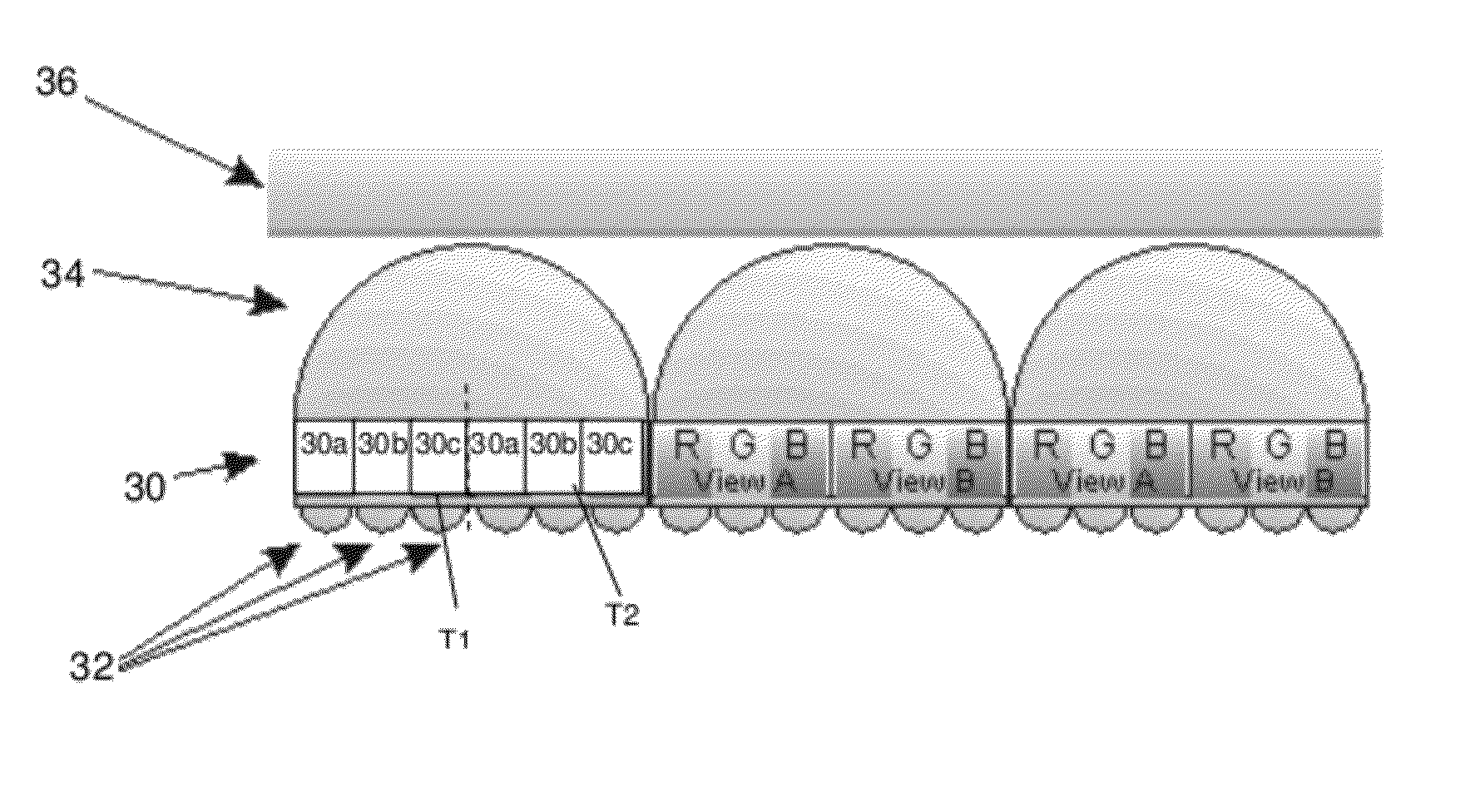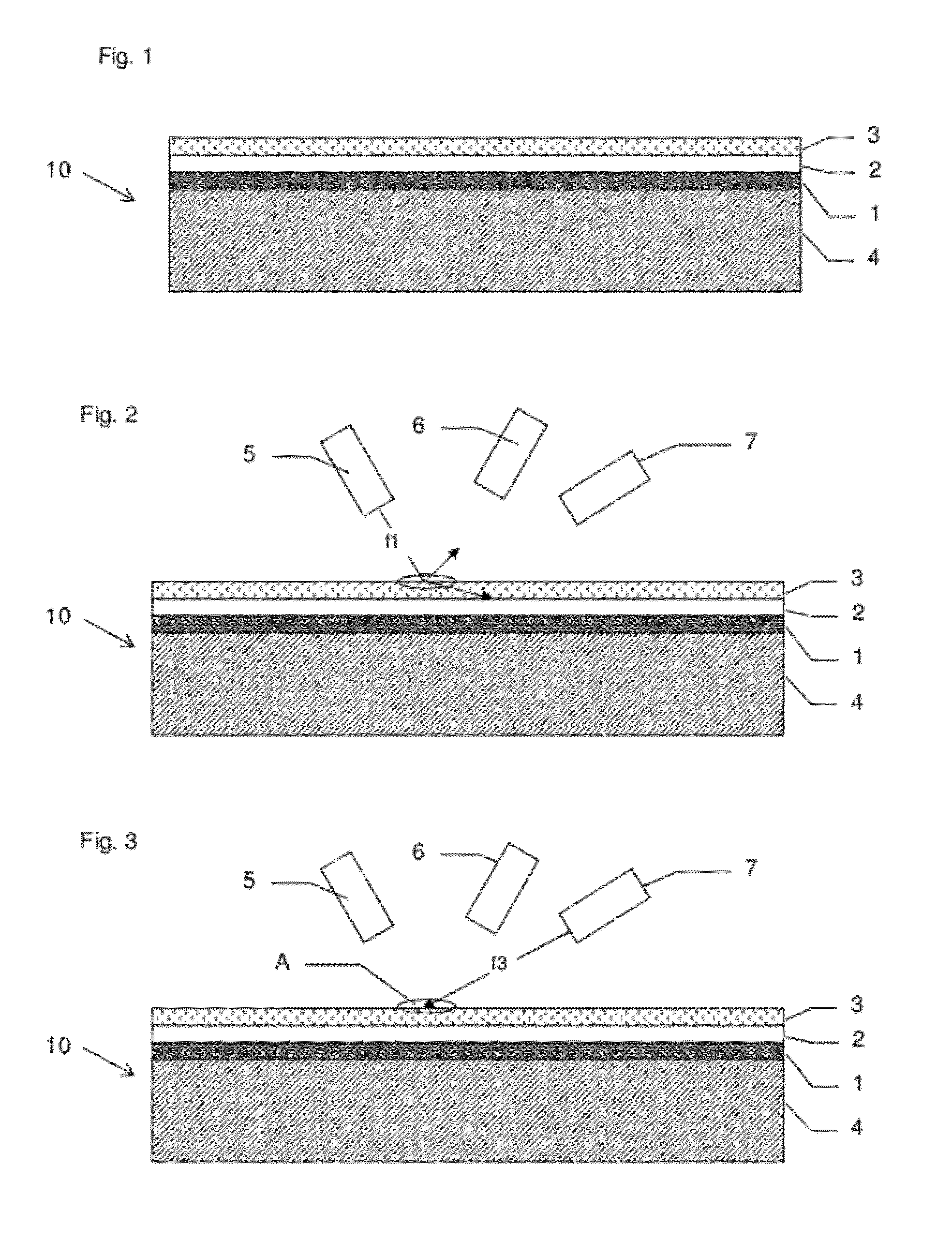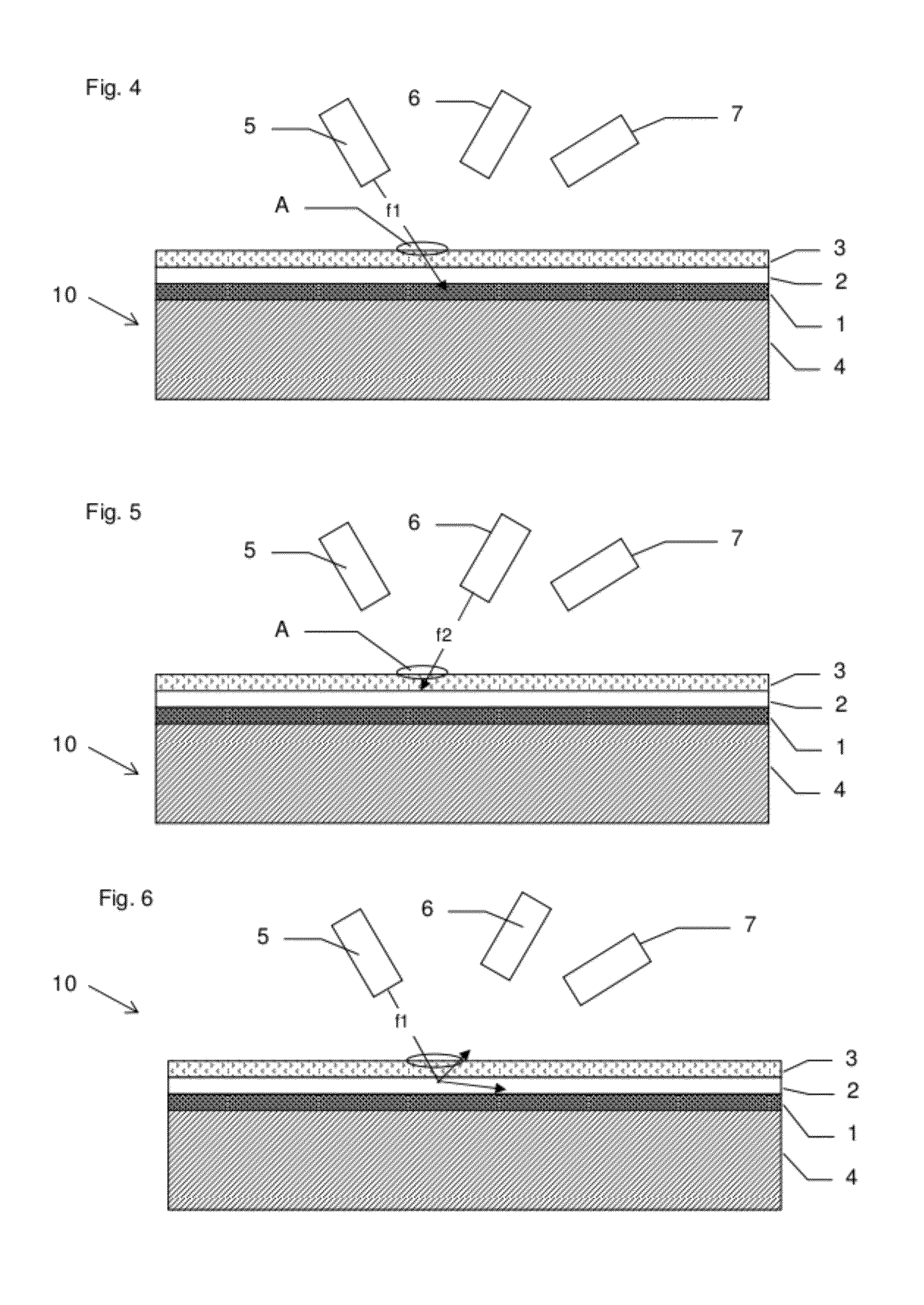Light reactive media
a technology of reactive media and light, applied in the field of light reactive media, can solve the problems of complex preparation and alignment, high cost, and high cost, and achieve the effects of short phosphorescence time, rapid change of image, and long phosphorescence tim
- Summary
- Abstract
- Description
- Claims
- Application Information
AI Technical Summary
Benefits of technology
Problems solved by technology
Method used
Image
Examples
first embodiment
A. First Embodiment
[0047]As shown in FIG. 1, a photoreactive medium 10 according to the first embodiment comprises a substrate 4, of flexible or rigid material. The substrate may be of plastics, paper, wood or fabric, for example. A first layer 1 is applied to the substrate, comprising a material reactive to light at a first frequency f1 to exhibit a visible change, such as a change in colour or shade. The first layer 1 may comprise a plurality of materials that each exhibit a different colour change, either arranged in a spatially distinct pattern, or sensitive to different frequencies within the range of frequency f1, to enable colour imaging.
[0048]A second layer 2 is applied over the imaging layer, comprising a material that allows frequency f1 to pass through until exposed to a light of a second frequency f2, whereupon the material changes state so as to block frequency f1. A third layer 3 is applied over the first protective layer 3, comprising a material that blocks frequency ...
PUM
 Login to View More
Login to View More Abstract
Description
Claims
Application Information
 Login to View More
Login to View More - R&D
- Intellectual Property
- Life Sciences
- Materials
- Tech Scout
- Unparalleled Data Quality
- Higher Quality Content
- 60% Fewer Hallucinations
Browse by: Latest US Patents, China's latest patents, Technical Efficacy Thesaurus, Application Domain, Technology Topic, Popular Technical Reports.
© 2025 PatSnap. All rights reserved.Legal|Privacy policy|Modern Slavery Act Transparency Statement|Sitemap|About US| Contact US: help@patsnap.com



